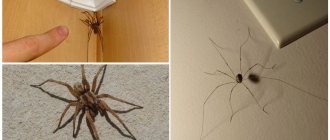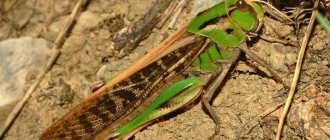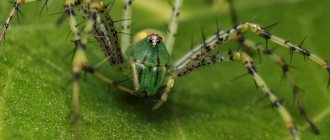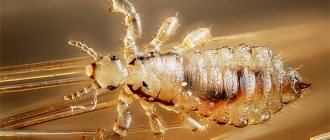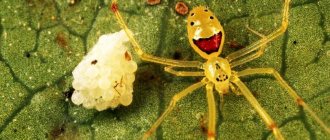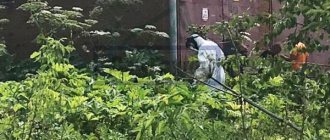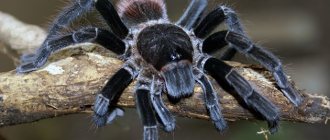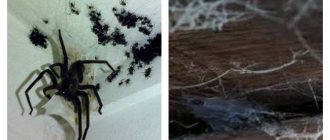- Wild animals
- >>
- Arachnids
The jumping spider is called a miracle of nature, a special type of arthropod. Among other representatives of this type of insect, it stands out for its ability to jump and has excellent eyesight. Many researchers claim that he even has intelligence. Jumping spider is a name that combines a whole group of insects. There are more than six hundred species. Representatives of this species are quite common in various parts of the world. Most of them prefer warm countries with a tropical climate.
Origin of the species and description
Photo: Jumping spider
Jumping spiders are representatives of arthropod arachnids; they are classified into the order Spiders, the family Jumping Spiders. Spiders of this species are representatives of flora and fauna that are found almost everywhere. One of the subspecies in 1975 was discovered even on the top of Everest, at an altitude of more than 6500 meters above sea level.
The history of spiders dates back more than 200 million years. The exact period of appearance of spiders is unknown due to the fact that finds with the remains of ancient spiders are extremely rare, since their body decomposes quite quickly. Scientists have discovered several important finds in amber. Some other body parts of ancient arachnids were found in frozen resin. They looked like small insects, whose body size did not exceed 0.5 centimeters.
Video: Spider jumper
The cephalothorax and abdomen had practically no separation. Ancient spiders had a tail section that was designed for weaving webs. Instead of webs, they produced a kind of dense, sticky thread. Spiders used them to wrap cocoons, line their lairs, or for other purposes. The ancient ancestors of modern spiders practically did not have glands that stimulate poisonous secretions.
There is a version that ancient spiders appeared on Gondwana. Then they very quickly spread almost throughout the entire earth. The subsequent ice ages reduced the habitat of spiders, and with them many species of ancient arthropods became extinct. Spiders tended to evolve quite quickly, change and divide into species.
Appearance and features
Photo: Black jumping spider
The jumping spider has fairly acute vision, which is required for successful hunting. The organs of vision are represented by eight eyes. They are located in three lines. The four largest eyes are located on the first line.
Interesting fact: The front organs of vision are able to rotate up and down, as well as in different directions. With the help of these moving eyes, spiders distinguish shapes, silhouettes, and colors.
The second row of visual organs is represented by two small eyes. The third row consists of two larger eyes located on either side of the head. This structure of the visual system allows you to assess the situation at all 360 degrees. In this way, you can easily avoid meeting the enemy. Vision helps for successful hunting. The peculiarities of the visual system also lie in the fact that spiders are able to see with each organ separately and put everything together into a single picture. The retina of the eyes also has an unusual structure, which allows you to reliably determine the distance to the desired object.
The respiratory system also has distinctive features. It even has peculiar lungs and a trachea. The body size of the horse does not exceed the size of a five-kopeck coin. The average body length is 5-7 millimeters. Sexual dimorphism is pronounced - females have a larger body than males. The cephalothorax and abdomen are separated by a thin groove. Different types of horses have a variety of appearance and colors depending on their habitat. Some species may resemble scorpions, ants, or beetles. The head section of the body is significantly higher, it is raised up above the abdomen.
Now you know whether the jumping spider is poisonous or not. Let's see where he lives.
What does it look like
The horse has eight pairs of eyes located on the front part of the cephalothorax. They provide this creature with uniquely clear vision, allowing it to determine the shape, color of objects, and the exact distance to them. In the middle there are two pairs of large central and one pair of small lateral eyes. The top row consists of two very small eyes, and the bottom row consists of two medium-sized eyes located at the junction of the head and chest. This structure of the visual apparatus gives the horse an almost all-round view.
Important! If you want to catch a horse or get a better look at it, approach it very slowly. This arthropod reacts to small fussy movements and quickly runs away.
It is unable
to notice The abdomen has an oval shape, the color is black and white, striped, which is why the horse is sometimes called a zebra spider. The cephalothorax is massive, shaggy, mostly white. Sexual dimorphism is expressed implicitly. The male's body length is 5 mm, the female's is 6 mm.
In total, the horse has eight legs and one pair of powerful pedipalps. This arthropod uses the front pair of legs and pedipalps for signal communication with relatives.
Where does the jumping spider live?
Photo: Jumping spider in Russia
Spiders live almost everywhere. They can spread in vegetation, walls, in soil, on trees, bushes, in secluded corners of various buildings, etc. The habitat depends on the species. Jumping spiders can live in countries with a tropical climate; they feel good and comfortable in deserts, semi-deserts, or even in the mountains. They give preference to regions with warm climates and love sunlight.
Geographical regions where the horse pack lives:
- Queensland;
- New Guinea;
- North America;
- N.S.W;
- Africa;
- Australia.
The lifestyle of the jumping spider and its habitat vary greatly among representatives of the various subspecies of this species. Some of them tend to weave a web and spend most of their time on it, others manage to build silk nests, which they arrange in various secluded corners, while others can simply live quietly on the surface of the earth, or on any type of vegetation. Surprisingly, spiders are completely unpretentious in choosing their living conditions. They are easy to find even high in the mountains or on rocky terrain.
Variety of species
Depending on their habitat, jumpers differ in color, lifestyle and hunting methods. This family includes the following species:
- The redback spider is primarily found in arid areas of the United States. It differs from other species in that it builds silky tubular nests on vines or under stones, where it waits for prey.
- The Himalayan species has the smallest size. Found high in the mountains. Hunts for insects that are blown into rock crevices by the wind.
- The green jumper is found in Australia and New Guinea. The color is bright with white patterns.
- The golden horse is common in southeast Asia. It has an elongated abdomen and large forelimbs. The golden color gave the spider its name.
- The jumping ant lives in tropical latitudes from Africa to the Australian continent. The color varies from yellow to black. Its external resemblance to aggressive ants makes it invulnerable to predators.
Species of this spider are unique for each climate zone - The herbivore, or vegetarian, is the black sheep among spiders. Habitat: Central American countries. The diet consists of lipid-protein Belt bodies and nectar, which is formed on acacias.
Regardless of species, all jumpers lead a solitary lifestyle, with the only exception being the mating season. In inclement weather, they hide in secluded corners, and when the sun appears, they go out hunting, having previously basked in the sun’s rays.
Keeping at home
Horses are part of the main group of arthropods suitable for home keeping. This is due to their peaceful disposition and lack of danger to humans. Moreover, he does not weave a catcher's web. Life expectancy in captivity ranges from 1.5 to 2 years.
The conditions for keeping him at home are similar to the conditions for a woodworm
For a comfortable existence, the jumper will need a small terrarium. You can use a glass jar with a plastic lid, in which you need to make small holes. A wet piece of cotton wool should be placed at the bottom of the container to maintain humidity.
The pet needs to have a secluded place to rest, so you need to place leaves, pebbles and some soil in its home. Fans of these cute creatures are confident that the horse is capable of remembering and recognizing its owner. He can sit still for a long time and watch a person.
Feeding is not difficult. It is only important to take into account the size of the insect that is being fed: it should not be larger than the spider itself. The horse does not need water, as it receives enough liquid from the food. But we should not forget about periodically moistening the spider’s house.
The jumping spider is very easy to keep if you follow all the rules.
A horse is a very small creature, so it should be handled with care so as not to injure its body. To avoid the appearance of ants in the terrarium, it must be cleaned once a week.
Importance in the ecological system
Jumping spiders are nature's orderlies.
They feed on small insects and are able to rid the garden area of numerous pests, minimizing the need to spray plants. This is interesting: how to get rid of spiders.
Tropical species of jumpers bring great benefits to people by eating malaria mosquitoes and other carriers of dangerous infectious diseases. These tiny creatures do not create inconvenience when near humans, so you should think carefully before exterminating them.
What does a jumping spider eat?
Photo: Red jumping spider
A well-developed visual system allows spiders to obtain food for themselves. When a potential victim appears, the spider instantly turns in its direction. Horses not only evaluate their prey, but also determine as accurately as possible the distance that separates them. After this, the horse makes an instant jump if the victim is within its reach. The front pair of limbs is used to capture and secure the victim. With chelicerae, arthropods pierce the chitinous protective layer of insects and inject poison inside. It not only immobilizes and paralyzes the victim, but also partially digests the internal organs of the caught insect, turning them into a single continuous liquid substance. Horses drink this substance with pleasure, leaving only a chitinous shell.
What serves as the food source for the jumping spider:
- spiders inferior in size and dexterity;
- flies;
- bugs;
- mosquitoes;
- caterpillars.
Spiders can also catch their potential food using the trapping web they weave. They spread their web on tree branches, blades of grass, and branches of bushes. Spiders have a special structure of their limbs. They have small bristles and small nails that allow them to move on any surface, including flat, smooth glass.
Features of character and lifestyle
Photo: Jumping spider
Jumping spiders are considered exclusively diurnal arthropods, since it is during daylight hours that they tend to be most active and hunt. They love sunlight and warmth. Often these spiders tend to bask in open sunny areas. These spiders are not at all afraid of people; they can settle in close proximity to them. Having seen a person, the horse does not rush to hide or look for cover. He watches him with interest. Often this particular type of arthropod is called orderlies. This is due to the fact that by appearing in new, previously uninhabited regions, spiders rid the area of harmful insects.
These spiders are helped to obtain food not only by their phenomenal vision, but also by another special function of the body - the hydraulic system. This is the body's ability to change the level of pressure in the limbs, due to which the size and length of the limb itself can vary. This allows arthropods to jump at different lengths. Spiders often make jumps of lengths that are 15-20 times the size of their body. However, for insurance, jumpers fix a strong thread where they want to jump.
Towards the end of the day, spiders look for a secluded place in which to weave their web. Such places can be in cracks in walls, under the bark of trees, under pebbles, etc. If the weather outside turns bad, there is no sun, it’s cold and it’s raining, spiders hide in their shelters for a long period of time. In the mornings in sunny weather they leave their shelters. After the spiders have thoroughly warmed up in the sun, they go in search of food.
Interesting fact: Scientists consider this type of spider to be brave insects, since they take flight only in extremely rare cases. When trying to escape from an enemy in this way, the horse quickly runs away, constantly turning in his direction. Spiders spend the cold season hiding in their shelters.
Importance in the ecosystem
Most species of spiders are able to provide benefits by destroying insects that are plant parasites. Jumping spiders, also known as vampire spiders, were described by scientists back in 2003. This species lives in Uganda, Kenya and near Lake Victoria. Often found near human habitation, the species contributes to a significant reduction in the population of annoying mosquitoes.
Spiders of this species mainly use female mosquitoes that have drunk blood as food. Thanks to their acute sense of smell, jumping spiders easily determine the location of such an insect. The time a spider attacks a victim, as a rule, does not exceed a hundredth of a second. The main part of the vampire spider's diet consists of malaria-carrying mosquitoes, so their importance in nature is difficult to underestimate.
This is interesting! The species found in our country prey on many garden and garden pests, and therefore help home garden owners keep their garden plants and garden crops intact throughout the warm season.
Social structure and reproduction
Photo: Pair of jumping spiders
Males differ from females not only in size, but also in color, in particular, the color of the front pair of limbs on which the stripes are located. Each subspecies is characterized by individual characteristics of the mating season. However, all representatives of jumping spiders have one thing in common - the bewitching dance of the male individual. This dance allows you to attract the attention of the female you like. During this dance, the male raises his limbs and taps his chest with them in a certain rhythm. If several males compete for the attention of one female, the one who has longer pedipalps will take precedence. If a female has not reached puberty, males tend to wait for this moment.
Male individuals weave a kind of web to which they attach drops of seminal fluid. Then he lowers the pedipalps into the seminal fluid and only then transfers the seed into the female’s body. Before laying eggs, the female chooses a reliable shelter and lines it with cobwebs. This can be space under stones, tree bark, in wall cracks, etc. After a secluded place is found and prepared, the female individual lays eggs and carefully guards them until the offspring is born.
After birth, the young do not need a mother, as they immediately have hunting skills. The female leaves. After a few molts, the offspring that are born reaches sexual maturity. The average lifespan of a spider in natural conditions is about a year.
Natural enemies of jumping spiders
Photo: Jumping spider in nature
Spiders have quite a lot of enemies in their natural habitat. It is in order to save lives that many spiders disguise themselves externally as other insects - ants or beetles.
The danger to spiders comes from birds that eat these small arthropods. The spidercatcher bird shows particular interest in them. It is also worth noting that it is these spiders that lizards or frogs, as well as insects that are larger in size, are happy to hunt. Spiders tend to eat each other if there are no other objects nearby that can become prey. We are talking not only about the female, who after mating can eat the male. Often adult, sexually mature spiders attack young animals.
Very often, jumping spiders become victims of wasps. These are parasitic insects that lay eggs on the surface or inside the body of spiders. After some time, larvae hatch from the eggs and slowly eat the arthropod from the inside. If there are too many larvae, they provoke the death of the spider.
Common types
Jumping spiders in natural conditions are represented by several species that differ in appearance, size and distribution area:
- The elegant golden jumping spider lives in the southeast Asian countries, and is characterized by a long abdominal part and a large first pair of legs. The body has a very peculiar golden color. The length of the male rarely exceeds 76 mm, and the females are larger;
- the Himalayan species is distinguished by its tiny size and is distributed high above sea level, in the Himalayas, where its only prey is random small insects that are blown onto mountain slopes by strong gusts of wind;
- The green jumping spider lives in Queensland, New Guinea and New South Wales. It is quite common in Western Australia, where it is one of the largest spiders. The male is very brightly colored, and his body is decorated with long whitish “whiskers”;
- The red-backed jumping spider prefers to live in relatively dry areas and is often found on coastal dunes or oak forests in North America, where it is one of the largest jumping spiders. A peculiarity of this species is the ability to build tubular-type silk nests under stones, wood and on the surface of the vine;
- The species Hyllus Diardi has a body up to 1.3 cm long. Along with other species of jumping spiders, it is not capable of building a web, therefore, to catch prey, it attaches a silk thread to some support and then jumps from such a peculiar “bungee” onto its victim ;
- The ant jumping spider perfectly imitates an ant in its appearance and is most often found in tropical zones from Africa to central Australia. Body coloration can vary from black to yellowish shades.
The most interesting is the royal type of jumping spider. This is the largest representative of the jumping spiders in North America. Males have a body length of 1.27 cm, and the length of females can reach 1.52 cm.
The male's body is black and has a characteristic pattern of white spots and stripes. The coloration of the female's body is most often represented by grayish and orange shades.
